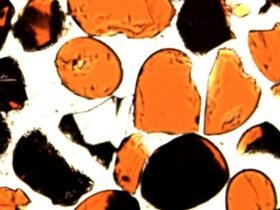
Autism in toddlerhood looks the same in boys and girls.
A large study of autistic kids between 1 and 4 years old turned up no overt differences in symptoms. Those results, published May 26 in Nature Human Behaviour, add clarity to how the disorder plays out in the first years of life. A deeper understanding of these symptoms could help clinicians identify kids who might benefit from specialized help early on.
Autism is more prevalent in boys than girls; roughly four boys are diagnosed for every girl. But prior studies have been decidedly inconclusive about whether boys’ and girls’ symptoms differ. Some studies found differences while others didn’t. Part of the uncertainty may have been due to studying older kids, whose life experiences may have shaped their symptoms. And part of the uncertainty may have come from small sample sizes, generally including fewer than 100 kids. By studying 2,618 kids with an average age of 27 months, the new study gets around some of these concerns.
We summarize the week’s scientific breakthroughs every Thursday.
“This study, with its large sample size, provides stronger evidence for there being no differences in how autism is expressed in girls and boys,” says Helen Tager-Flusberg, a developmental scientist and autism expert at Boston University.
Scientists tested these youngsters on 18 different measures including their ability to dress independently, eye-tracking attention tests and their language skills. On nearly all tests, scores for girls and boys with autism were indistinguishable, the researchers found. “We were actually incredibly surprised to find that there were no differences, no matter where, no matter how we looked,” says study coauthor and neuroscientist Karen Pierce, who is co-director of the University of California, San Diego Autism Center of Excellence. The sole difference came from a parent-reported measure of daily living skills, such as feeding themselves, on which girls scored slightly higher than boys.
The study included boys and girls who did not have autism. Among those kids, girls were slightly more advanced on some social and developmental scores relative to boys, the researchers found. That difference was expected. But the story was very different among autistic toddlers. “At this very young age, they’re just not presenting differently from a diagnostic perspective,” Pierce says. “They’re just not.”
Differences in symptoms may show up later, as girls and boys grow up. But then again, they may not. Pierce hopes to follow these kids with autism over the years to explore what might change. If symptoms do begin diverging, as some studies have suggested they do, that difference could be explained by biological differences, differences in the kids’ social environments or a combination of the two.
The screening used to spot the girls with autism in the study could have influenced the findings, Tager-Flusberg cautions. “Girls with milder symptoms may not have been identified on the screener,” she says. If girls with less noticeable symptoms of autism were not included in the study, then the girls who remained would be more affected than other girls — a selection criteria that might have masked some differences between boys and girls, she says.
It’s possible that the new study missed autism in some young girls, Pierce says. But the screening method identified girls with autism at an expected rate, given national averages in the United States.
If the results are replicated in other studies, then “then it opens up many questions about why girls with milder autism are often not identified until later in childhood, and why older autistic girls show somewhat different symptoms compared to boys,” Tager-Flusberg says. “All these questions are important for understanding why autism is so much more common in males than females at all ages.”
Source link













Leave a Reply